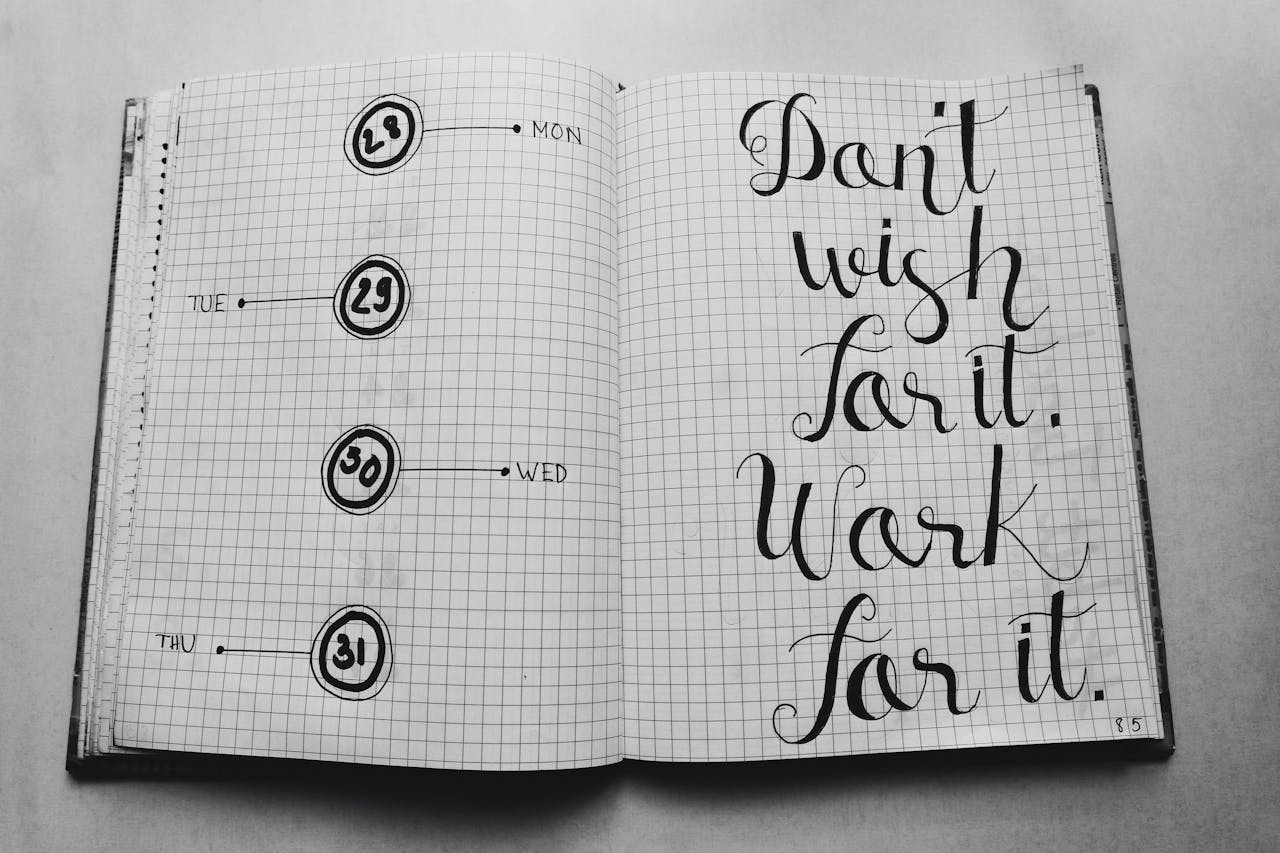

Drowning in tasks, only to find your to-do list growing at an unstoppable pace? Here are some ideas to rescue you from the treacherous waves of time-wasting and help you navigate productivity like never before. Discover the benefits of time blocking, master various techniques, and create your personalized schedule.
We also tackle staying consistent, overcoming challenges, and using top-notch tools and resources to ensure smooth sailing towards more efficient, focused, and successful days.
The Benefits of Time Blocking
Time blocking reaps numerous rewards, including higher productivity and better work-life balance. By allocating a specific duration for tasks and activities, individuals can reduce distractions, accomplish more, and attain heightened focus. Studies have shown that people who consistently utilize time blocking exhibit improved efficiency, enabling them to make the most out of their work hours.
Moreover, time blocking positively influences mental well-being, as it leads to greater organization and satisfaction in both work and personal realms. When individuals consciously allocate their time, they can maintain a balance between professional responsibilities and personal commitments, such as exercise, hobbies, and socializing.
Your intentional organization of time can mitigate stress and anxiety by helping individuals prioritize and track their progress on important tasks. Ultimately, the strategic approach of time blocking can elevate the quality of work, foster goal achievement, and promote a more fulfilling life.
The Different Types of Time Blocking Techniques
Time blocking techniques vary in style, catering to different preferences and work habits. The Pomodoro Technique, for instance, has gained popularity for its simplicity and ability to minimize burnout. Developed by Francesco Cirillo, this technique involves setting a timer for 25 minutes (a “Pomodoro”) and working nonstop on a task; after each Pomodoro, take a brief 5-minute break. Every fourth Pomodoro warrants a longer, 15-30 minute break.
Another popular time blocking technique is the Eisenhower Matrix, developed by President Dwight D. Eisenhower. This matrix helps users prioritize tasks by urgency and importance, sorting them into four categories:
- Urgent and important,
- Important but not urgent,
- Urgent but not important, and
- Neither urgent nor important. By categorizing tasks, users can allocate their time more effectively, tackling high-priority items first and ensuring that nothing slips through the cracks.
The beauty of time blocking lies in the ability to customize techniques, combining elements of different methods to create a personalized productivity system tailored to your individual needs and goals.
Creating Your Personalized Time Blocking Schedule
Embarking on the journey to create your personalized time blocking schedule requires some strategic planning and thoughtful consideration. Start by taking a moment to reflect on your goals, your daily work and personal priorities, and your productivity habits to develop a schedule tailored specifically for you.
For instance, you may find that you’re most productive during certain hours of the day, allowing you to divide your day into different time blocks for various activities, such as work, personal growth, and leisure time. Additionally, some people find success by incorporating a color-coding system into their calendars, which makes it easy to visualize the time allocated to each task or category in their daily lives.
An essential aspect of creating your time blocking schedule is maintaining consistency in your routine, yet incorporating flexibility to accommodate unforeseen circumstances. Instead of scheduling every minute of your day, consider building buffer blocks into your schedule, providing cushioning between activities.
These buffer zones can help account for hidden time drainers, such as unexpected phone calls or unforeseen travel delays, ensuring you maintain your productivity and avoid feeling overwhelmed.
Don’t forget to set aside dedicated time for breaks and self-care, as this can be crucial in preventing burnout and maintaining long-term productivity.
How to Stay Consistent with Time Blocking
Staying consistent with time blocking is the key to unlocking its full potential for boosting productivity. One way to ensure consistency is by setting aside a specific time each week to plan your time blocks, like Sunday evenings or Monday mornings.
This dedicated planning time allows you to assess your priorities, allot appropriate time blocks for each task, and remain adaptable to any sudden changes or new tasks that may emerge. Furthermore, using digital tools like Calendar, Google Calendar, or Toggl Track can help you visualize your time blocks and make adjustments easily throughout the week.
To maintain seamless time blocking, it’s essential to be both flexible and disciplined. Be prepared to rearrange your time blocks if unexpected events arise or if a task takes longer than anticipated. However, be cautious not to procrastinate or let distractions impact the integrity of your time blocks. Stay accountable by sharing your calendar with a trusted friend or colleague, who can help you stay on track and provide support when needed. Consistently practicing time blocking can eventually lead to increased productivity, better time management, and improvement in your overall work and life balance.
Overcoming Common Time Blocking Challenges
Time blocking can help you overcome common challenges, such as procrastination and distractions, to boost your productivity. One widespread issue is inconsistent daily routines, which can be addressed by scheduling fixed time blocks for similar tasks and committing to recurrent routines.
Adhering to a structured calendar prevents decision fatigue, as you already know your priorities and tasks for the day. Research has shown that time blocking can increase productivity by up to 150% through structured breaks, which improve focus and reduce stress. Additionally, time blocking encourages effective communication by including designated slots for responding to emails and collaborating with colleagues.
Despite the proven benefits of time blocking, some individuals may struggle with interruptions or unexpected events. Flexible time blocking is an effective solution to ensure productivity is maintained amidst unforeseen changes. By incorporating buffer blocks or overflow time, you create space in your calendar to catch up on tasks you couldn’t complete due to disruptions.
Always make time for self-assessment and refining your time blocking strategies. Regularly evaluating your accomplishments and identifying areas of improvement can help you optimize your time management. Remember, practice makes perfect, and with consistency and dedication, overcoming common time blocking challenges becomes feasible.
Time Blocking Tools and Resources
To effectively implement time blocking in your daily routine, a variety of tools and resources are at your disposal, making the process even more efficient and enjoyable. Among the top choices are digital calendars, mobile apps, and good old-fashioned paper planners
As you explore resources, keep in mind that the goal is to find sustainable strategies that genuinely enhance your productivity levels. Therefore, don’t shy away from personalizing the way you use these tools to fit your unique needs. For example, some people may prefer color-coding their calendar events according to the type of task.
In contrast, others could benefit from interweaving more breaks and leisure activities into their agenda. Whichever approach works best for you, these tools and resources can provide the structure needed to make your time blocking efforts a productive and rewarding part of your daily routine.
Closing Thoughts
Time Blocking has equipped you with the necessary knowledge and tools to elevate your productivity through strategic calendaring. By understanding the advantages time blocking offers and exploring various techniques, you can create a personalized schedule tailored to your needs.
Commitment and consistency go a long way in overcoming challenges and adapting to this method, ultimately transforming the way you approach work and personal tasks. With the plethora of resources and tools available at your fingertips, there’s no better time than now to harness the power of time blocking and unlock your full potential. Happy calendaring!











Angela Ruth
My name is Angela Ruth. I aim to help you learn how Calendar can help you manage your time, boost your productivity, and spend your days working on things that matter, both personally and professionally. Here's to improving all your calendars and becoming the person you are destined to become!